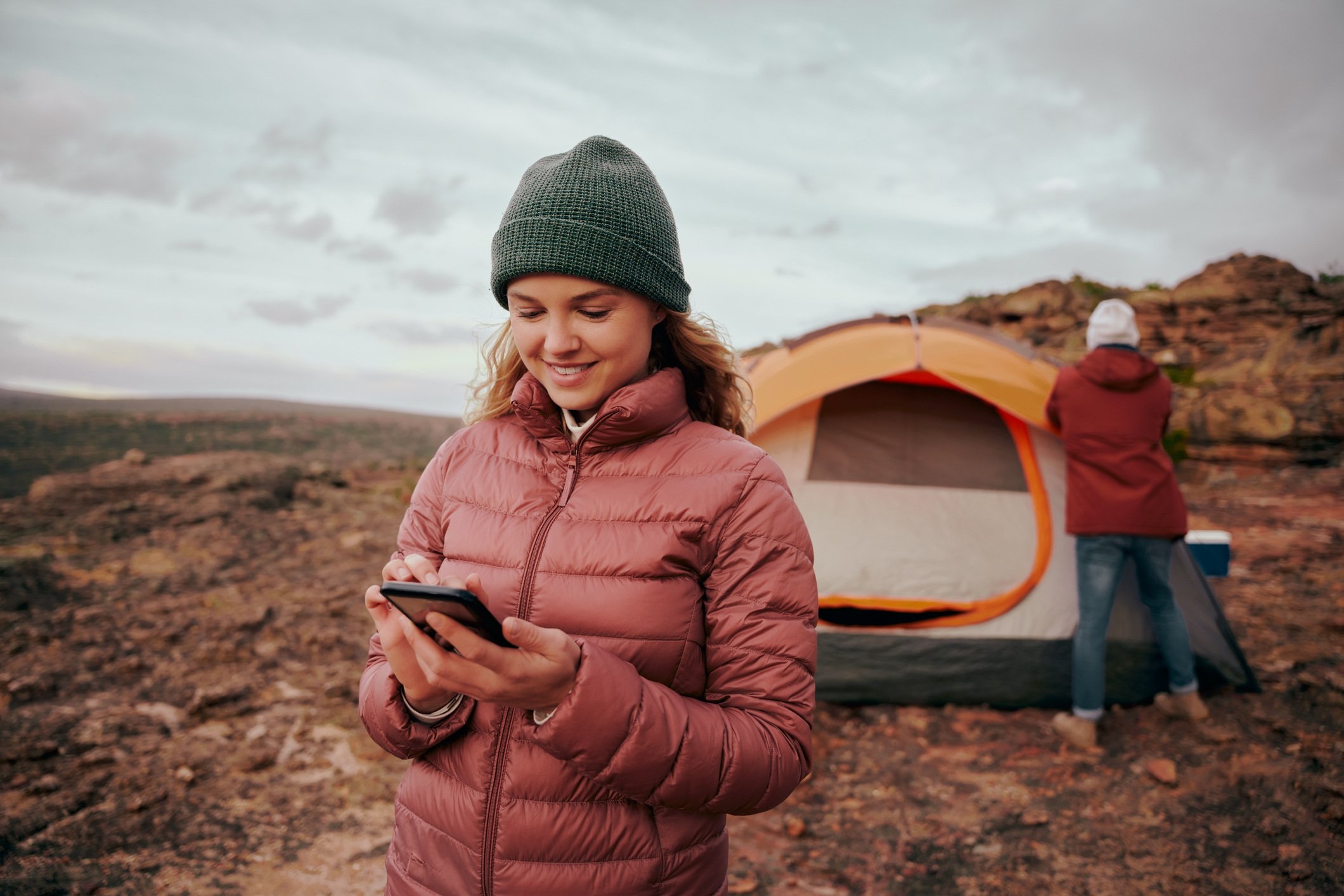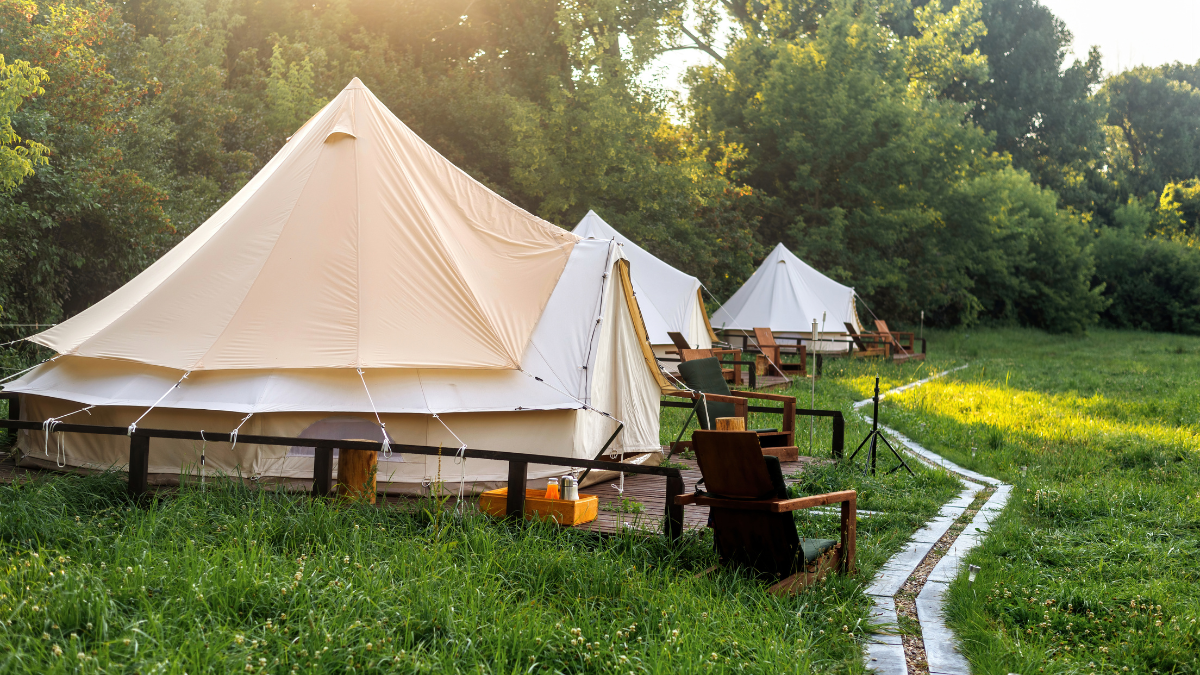As a campground owner, you are undoubtedly aware of the importance of creating positive guest experiences.
While that may seem simple to accomplish for some of your campers, it’s vital to consider how all people experience the outdoors. For those living with disabilities, they may face significant challenges and barriers to an enjoyable camping experience.
If you’re wondering how to alleviate some of the challenges experienced by campers at your park, we’ve put together a checklist to help you offer ADA camping and an excellent stay for all campers.
What Is ADA Compliance?
The importance of meeting ADA guidelines cannot be understated. Up to 1 in 4 adults in the United States have some type of disability, and failure to meet ADA standards is not only illegal in many cases, but can alienate many campers from your campground.
New campsites constructed after ADA was created must meet standards. If existing structures were made before the establishment of this act, they must make reasonable accommodations to help meet these standards. Additionally, you must be in compliance with the ADA if you employ 15 or more people full-time.
To be considered ADA-friendly, campgrounds must meet specific requirements and standards set by The Americans with Disabilities Act ADA and other federal regulations. ADA camping refers to campgrounds that meet these standards and are qualified to accommodate people with disabilities.
To make your campground ADA-compliant, here’s a checklist for getting started.
Creating an ADA-compliant Checklist With 5 Steps
1. Offer ADA-friendly Communication
The first step to making your campground ADA–compliant is to ensure your campground staff is educated to communicate appropriately with those who have both physical and nonvisible disabilities.
This includes providing information through accessible formats both online and at your campground.
Optimize Your Website for Accessibility
To assist your campers with disabilities during the booking process, you can include an Accessibility Statement on your website or booking engine that lists all accessible features and outlines your commitment and efforts to comply.
Additionally, for guests with visual impairments or other disabilities, there are a few updates you can make to your website to ensure they can access all necessary information in advance of their stay.
Visual Content. Minimize moving elements like slideshows or graphics that change when hovered over or enable them to be paused by the viewer. Ensure you provide video captions, that there is high contrast between text background colors and images, and that the text is large enough to read.
Forms. All links, forms, and commands on your site should be able to be tabbed through in a logical order to make website navigation accessible.
Title Tags and Alt Text. Each website page should have a unique and descriptive title that indicates what the page covers. Furthermore, your non-text content should have alt text to help convey the page’s information. Non-text elements include images, links, logos, media, form buttons, charts, maps, etc. Many website content management systems (CMS) have fields for alt text that make adding this relatively easy.
Use Clear Signage at Your Campground
Ensure your campground has signs posted to identify accessible routes, facilities, and amenities to help your campers navigate your campground without difficulty.
To make your signs ADA-compliant, they should have large print and braille and raised symbols to aid those with visual impairments. Additionally, they should portray and describe their purpose. For example, a bathroom should clearly denote it’s a bathroom, or a room for employees only should explicitly indicate its use.
2. Provide Wheelchair Accessibility
One ADA camping regulation requires a certain percentage of ADA-accessible areas per campground, based on the total number of campsites at your property. This regulation varies based on when your campsite was constructed. These accessible campsites should have a tent pad — a flat surface with minimal slopes.
Flat surfaces not only make wheelchairs more manageable, but they can also make walking easier for those with disabilities by avoiding inclines that could cause trips or falls. If there are RV rentals available at your outdoor property, you can make them more accessible by including ramps that lead to the RV entrance. Additional features that should be wheelchair accessible include picnic tables, fire pits, and other amenities.
3. Install Accessible Restrooms
Using restrooms can be challenging for people with disabilities if they aren’t designed with accessibility in mind. As a result, bathrooms used by campers and employees must be ADA-compliant, as it is the right of employees to have accessible restrooms to use while they are at work.
Consider the following features to make your bathrooms accessible:
Clear Floor Space. For wheelchairs and other mobility equipment to be moved around with ease, there needs to be at least 60 inches of clearance.
Reachable Sink. The sink should be outside the clear floor space. There should also be at least 30 inches by 48 inches of space between the door and the sink to provide enough space to maneuver.
Clean Restrooms. Your employees and campers with disabilities should be able to use the restroom without having to clear a space or clean up after a previous guest. Make sure to inspect your restrooms for cleanliness routinely.
Compliant Grab Bars. Grab bars should be 36 inches long on the rear wall and 42 inches on the side wall with one and a half inches of grab bar clearance in all directions.
Proper Toilet Dimensions. The flush lever should be on the open side of an ADA-compliant toilet, which must be at least 60 inches wide and 17 to 19 inches above the floor. Additionally, there needs to be 16 to 18 inches between the side wall and the toilet's center.
4. Offer Alternative Lodging Options
While not an ADA camping requirement, there are several ways to increase accessibility and provide your campers with a memorable experience by offering them various lodging options.
Some people with disabilities might find alternative camping accommodations a better option, including ones that include a bed, in-room bathroom, storage for assistive devices and other gear, and more. You should also consider:
- Implementing yurts, tents, or RV rentals that accommodate wheelchairs to help all guests be comfortable
- Offering taller bed options to make the process of getting in and out of bed easier
- Providing more fun and entertaining lodging options make your campground more unique
5. Don’t Forget About Nonvisible Disabilities and Illnesses
To meet the needs of all employees and campers, it’s essential to consider nonvisible or hidden disabilities.
Requests, such as bringing service animals along, must be permitted everywhere other campers are allowed to go, and it’s important to approach each camper’s circumstances with understanding and accommodation.
Offering your guests the option to make special requests through your reservation system can ensure they can enjoy their stay and feel secure while visiting your property.
Design Multiple Rest Areas
You can also help campers with both visible and nonvisible disabilities by providing multiple rest areas throughout your campground.
Creating rest areas with seating along your trails can help your campers avoid dehydration, offer those with mobility issues a way to take a break, and if these rest areas are covered or shaded, provide a cooler retreat to help people avoid overheating. This is also an effective way to allow those who fatigue easily to enjoy a hike or walk along your trails.
Support ADA Camping at Your Campground With RMS
Providing a campground that supports all campers can be a lot to juggle without the right technology.
With RMS, you’ll receive an all-in-one reservation management system designed to make every aspect of your campground better; not just for you, but for your campers as well.
Explore all the possibilities of implementing powerful reservation management software at your campground by downloading our free guide Operational Excellence in Hospitality Using PMS to Work Smarter.






